A Google news search of the term “climate change” turns up a recent story in the Roanoke Times claiming human caused climate change is causing increased incidences of flooding in Virginia Beach, Virginia. This is false. Flooding may be worsening in Virginia Beach, and human activities may be contributing to it, but research indicates a climate change induced increase in the rate of sea level rise is not to blame.
A story, titled “Virginia Beach confronts inescapable costs of rising seas,” discusses a $568 million bond issue being proposed to improve infrastructure and lessen future damage from flooding in the region. If voter don’t approve the bond, the story warns “the city could lose billions of dollars in the next half-century as recurrent flooding inundates roads, businesses and homes.”
The Roanoke Times the proceeds to incorrectly attribute the danger of recurrent future flooding in Virginia Beach to climate change induced rising seas.
“The referendum underscores the mounting costs of adapting to climate change for U.S. cities,” writes the Roanoke Times. “The need for money to protect communities against climate change is growing across the globe ….”
Data show seas are not rising at an unusual rate in the Chesapeake Bay region where Virginia Beach is located.
As discussed in a recent Climate Realism article, the National Oceanic and Atmospheric Administration has maintained a tidal gauge at Sewell’s Point in Norfolk since the 1920s. The tidal records, as shown in the NOAA graph below, show the pace of sea-level rise remains the same now as it was 100 years ago – when there was minimal human-emitted carbon dioxide in the atmosphere.
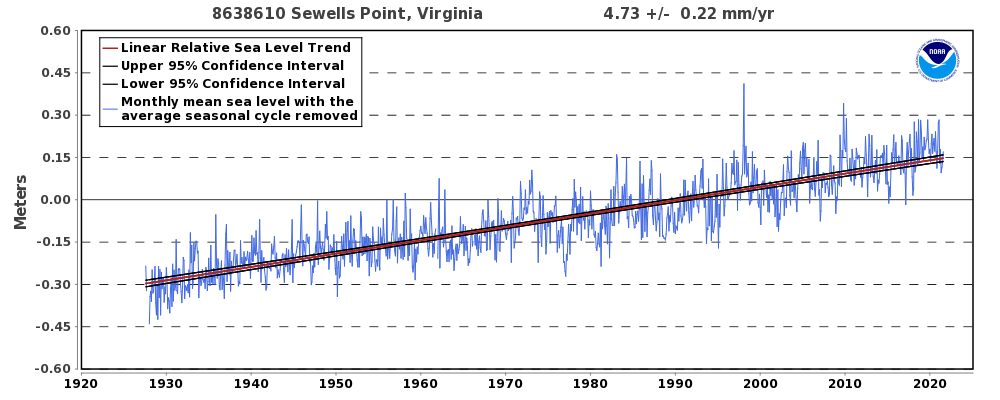
NOAA has maintained three other tidal gauges in the Norfolk region, dating back to the 1930s, 1950s, and 1970s, respectively. None of the other three show any acceleration, either.
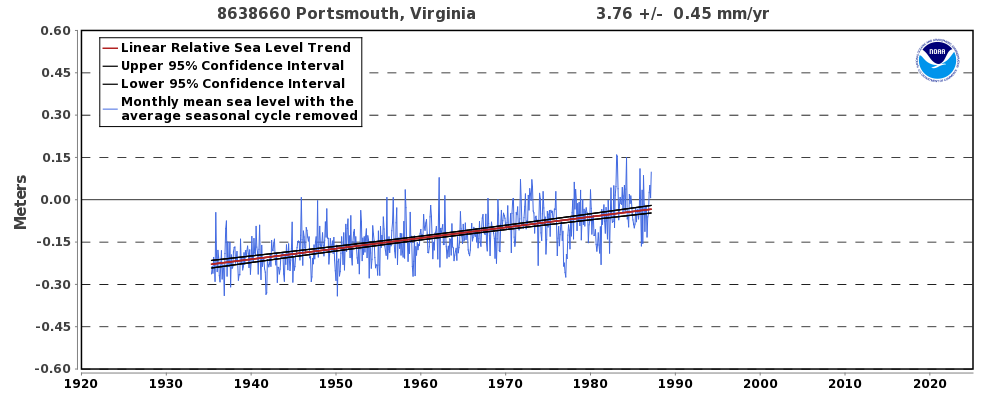
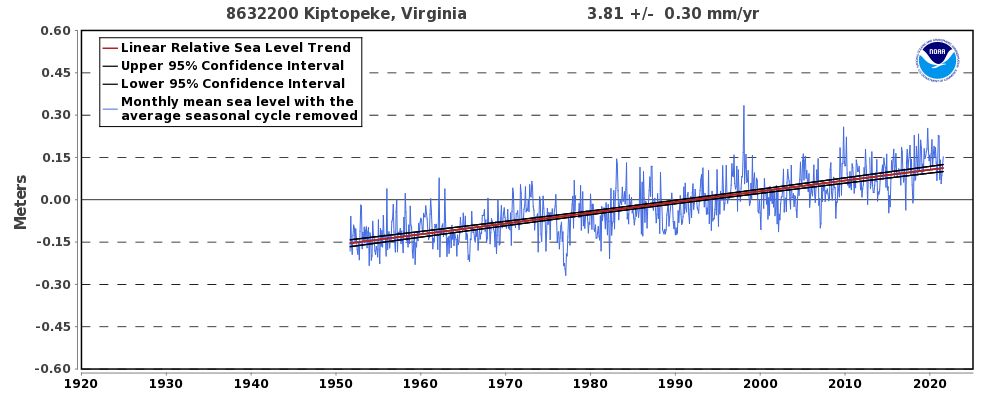
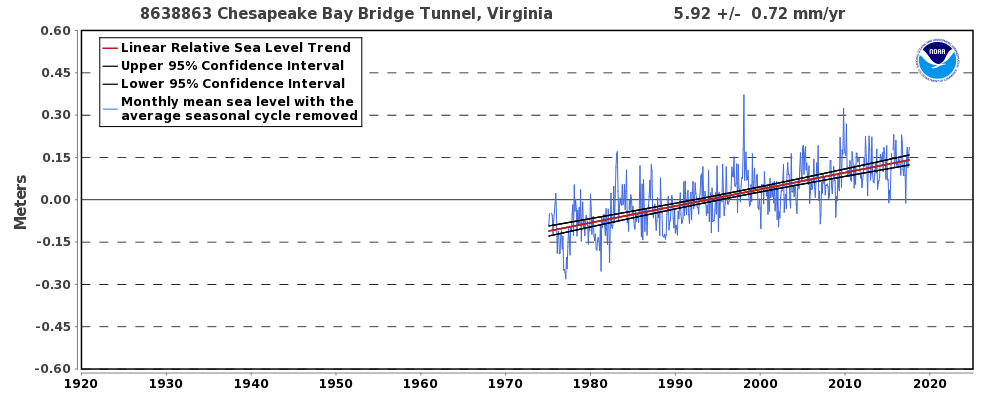
Each of these tide gauges is within 30 miles of Virginia Beach and none show unusual rates of sea level rise or an increasing rate in recent decades.
To the extent flooding has increased in the Chesapeake Bay region and Virginia Beach in particular, research shows it is due to localized land subsidence. According to a U.S. Geological Survey (USGS) report, titled “Land Subsidence and Relative Sea-Level Rise in the Southern Chesapeake Bay Region,” states:
Land subsidence has been observed since the 1940s in the southern Chesapeake Bay region at rates of 1.1 to 4.8 millimeters per year (mm/yr), and subsidence continues today.
This land subsidence helps explain why the region has the highest rates of sea-level rise on the Atlantic Coast of the United States. Data indicate that land subsidence has been responsible for more than half the relative sea-level rise measured in the region. Land subsidence increases the risk of flooding in low-lying areas, which in turn has important economic, environmental, and human health consequences for the heavily populated and ecologically important southern Chesapeake Bay region.
The aquifer system in the region has been compacted by extensive groundwater pumping in the region at rates of 1.5- to 3.7-mm/yr; this compaction accounts for more than half of observed land subsidence in the region.
The proposed bond issue may be needed to prevent increased incidences of flooding in Virginia Beach, but it will only work to prevent flooding if the “fixes” funded by it focus on the right causes of the problem. Local water withdrawals, wetlands conversion, and land compaction are to blame for Virginia Beach’s flooding woes, not climate change. Better land and water management, not fossil fuel use restrictions, are needed to reduce the incidences of homes and businesses in Virginia Beach flooding.
















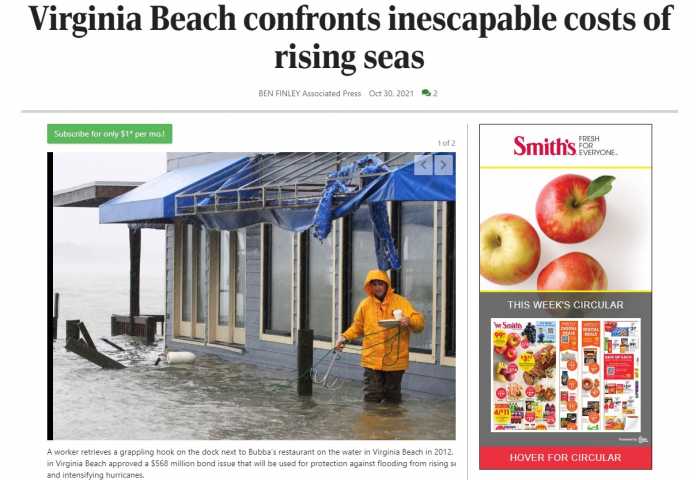






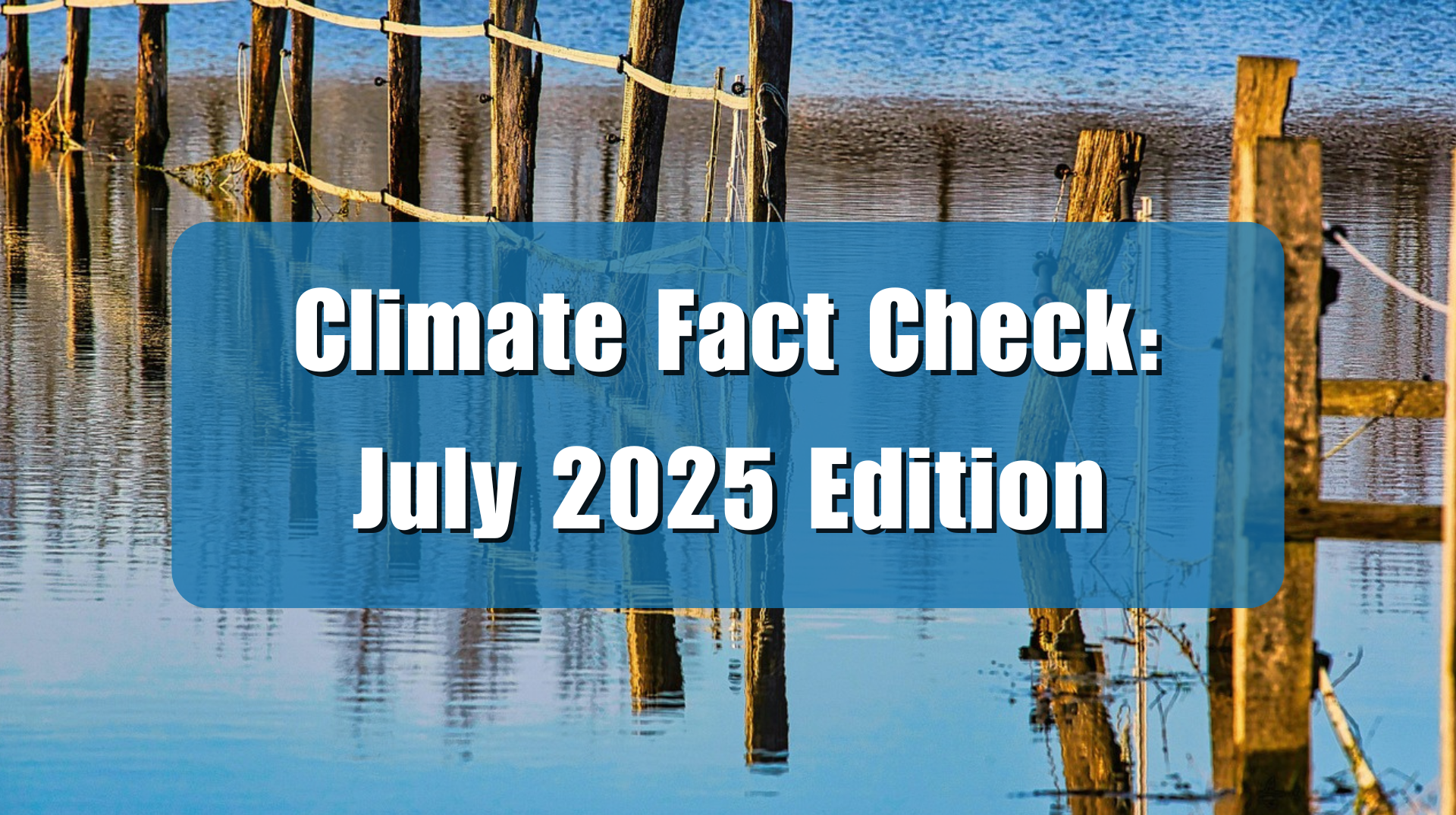

It’s also the sight of a large Meteor Impact